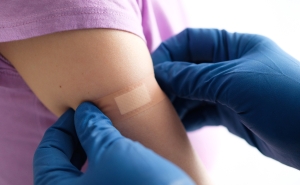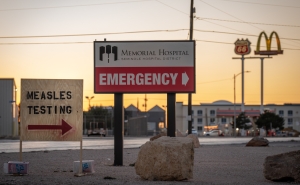What To Do If You Have COVID-19

UPDATED October, 2023
If you have a confirmed COVID diagnosis via a positive test, you may feel overwhelmed or confused about what to do next. Don't worry: there are a few things you can do immediately to protect both yourself and those around you.
1. Isolate immediately.
If you have been exposed to COVID-19, are experiencing symptoms, or have received a positive diagnosis, make a plan to isolate yourself.
If you are living in a household with other people who do NOT have COVID-19—and especially if any household members are at high risk of serious disease—you should isolate yourself in a single room or separate area of the house, preferably with access to a bathroom that only you will use. If possible, open the windows and/or doors in the “sick area” and find ways to improve ventilation.
If you must share space with others in your household, find ways to improve ventilation in the common spaces, wear a mask, and try to stay 6 feet away from other household members. Household members should also be masked when in the common space. If someone is helping to care for you, they should be masked (and gloved if touching body fluids) when they are caring for you.
If multiple members of your household have symptoms or have tested positive for COVID-19, it’s OK to isolate together—you will not make each other sicker by doing so.
2. Call your doctor or health care provider if you have one.
It’s a good idea to let your doctor or health care provider know you have received a positive COVID-19 test. In some cases, they may give you a prescription for Paxlovid, an antiviral medicine used to treat COVID-19. This medication can shorten the course of illness and also, in many cases, help prevent illness from becoming severe.
They can also answer any questions you have, such as:
- Is it OK to take ibuprofen or aspirin for symptoms?
- What should I do if my symptoms become worse or last longer than 10 days?
- Is there anything in my medical history that might put me at risk for complications? If so, what should I be aware of/looking out for?
3. Make a plan for at least 5 days of isolation and quarantine.
Once you’ve isolated yourself from other COVID-19–negative household members, you’ll need to make a plan to stay home and isolate from others for a minimum of 5 days from the first day of symptoms (this could be longer if your symptoms have not improved).
The goal is to care for yourself without exposing others to COVID-19. This may mean calling your employer to request sick leave or remote work if you’re feeling well enough and are able to do so, setting up grocery delivery, and asking for help with errands or chores like dog walking. You can learn more about when you can be around others again from the CDC.
4. Monitor your symptoms if you have them.
It’s important to take good care of yourself while in quarantine or isolation regardless of whether you have symptoms. Drinking plenty of fluids, eating well, exercising if possible, and maintaining social ties with friends and family through virtual means can all help your physical and mental well-being.
If you are experiencing COVID-19 symptoms—which may include fever or chills, cough, shortness of breath, fatigue, headache, muscle or body aches, and more—your health care provider may recommend taking over-the-counter medications like acetaminophen or ibuprofen to reduce symptoms.
It is also possible that you will have no symptoms. Even if you are not symptomatic, it’s important to stay isolated for 5 days, as we know that people who are infected with no symptoms can spread the virus to others.
5. Know how and when to seek help for severe or worsening symptoms.
If at any time during your COVID-19 illness you have trouble breathing, chest pain, new confusion, inability to wake or stay awake, or bluish lips or face, you should call for immediate medical assistance.
If your symptoms last longer than 10 days, check in with your doctor or the local health department.
6. You can still get vaccinated!
If you’ve recently had COVID, it’s still important to stay up to date with your vaccines. According to the CDC, you can wait three months since your symptoms began or, for asymptomatic cases, since you first tested positive.
Keri Althoff, PhD ’08, MPH ’05, is an associate professor in Epidemiology with a joint appointment at the Johns Hopkins School of Medicine. She is the Provost’s Fellow for Research Communication at Johns Hopkins.
Lindsay Smith Rogers is the producer of the Public Health On Call podcast and the director of content strategy for the Johns Hopkins Bloomberg School of Public Health.





